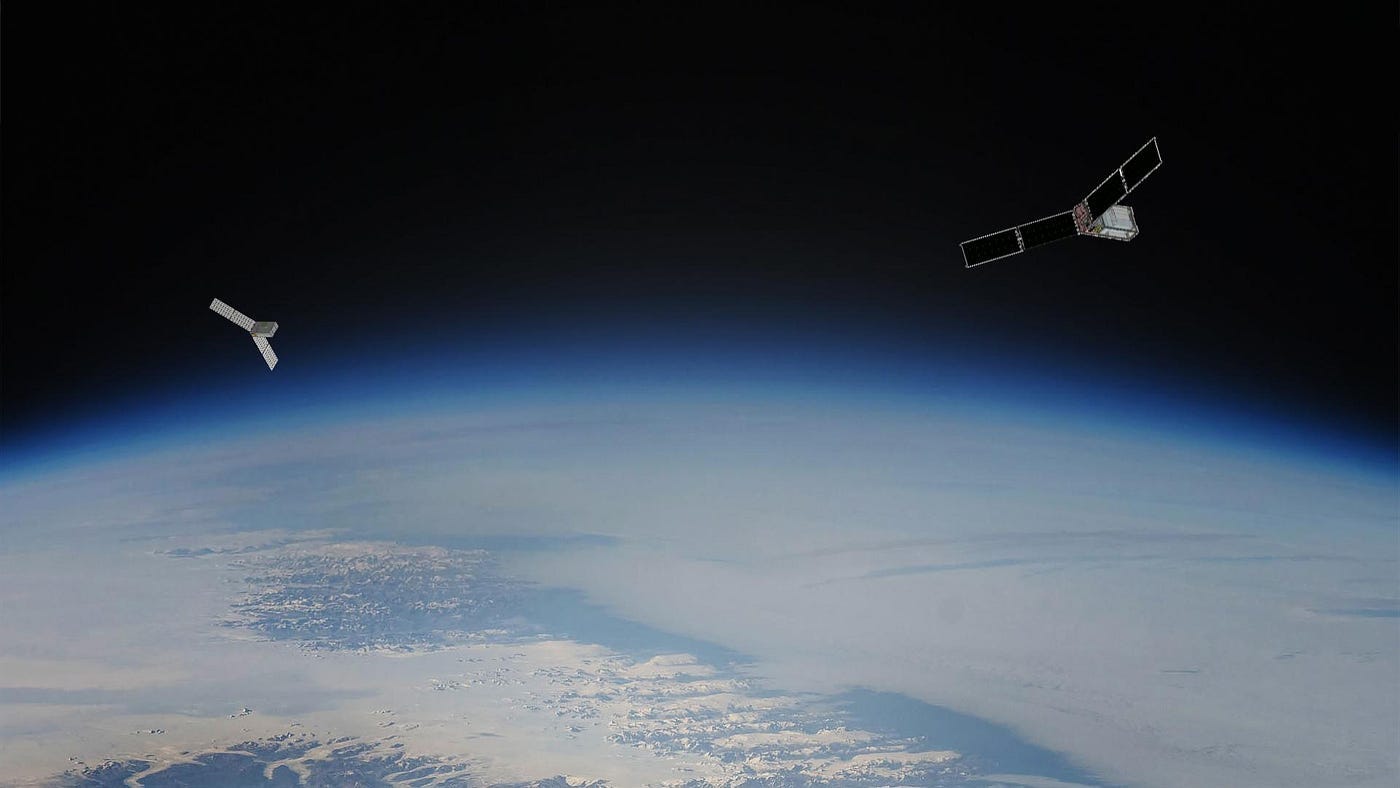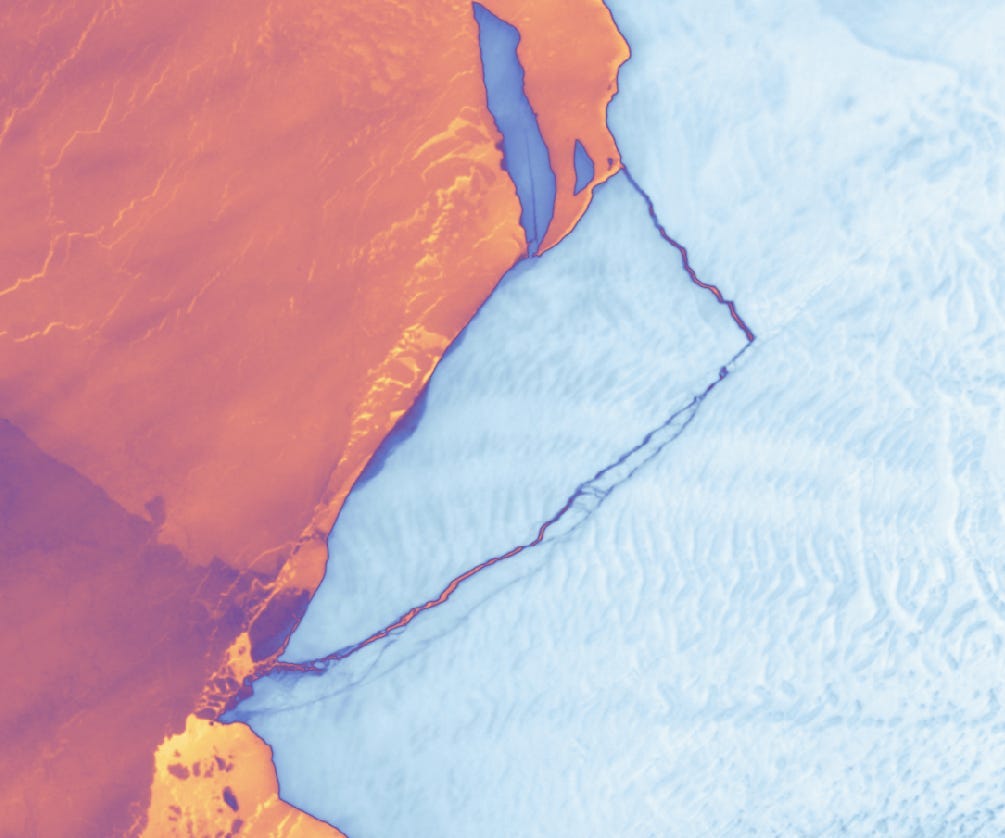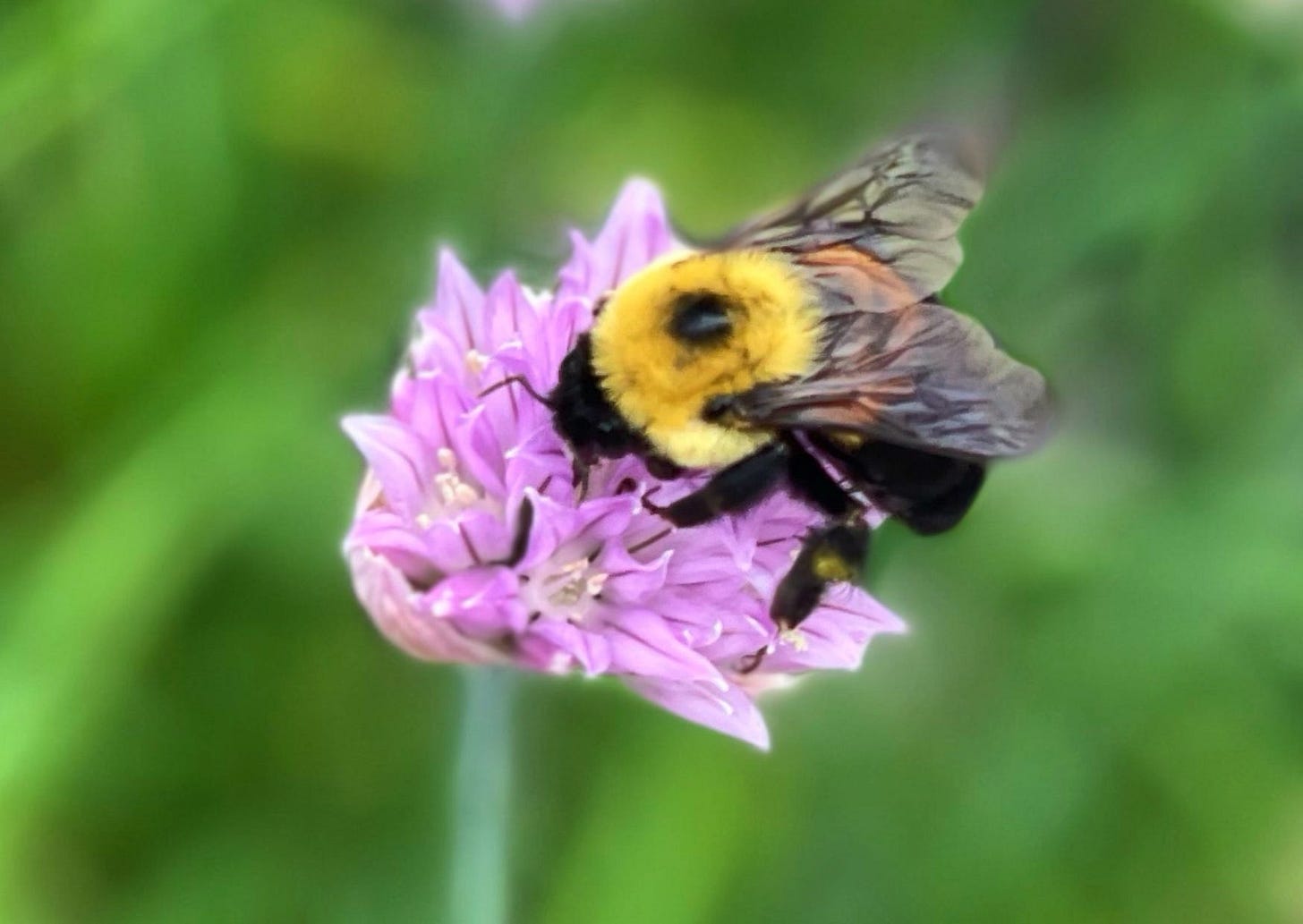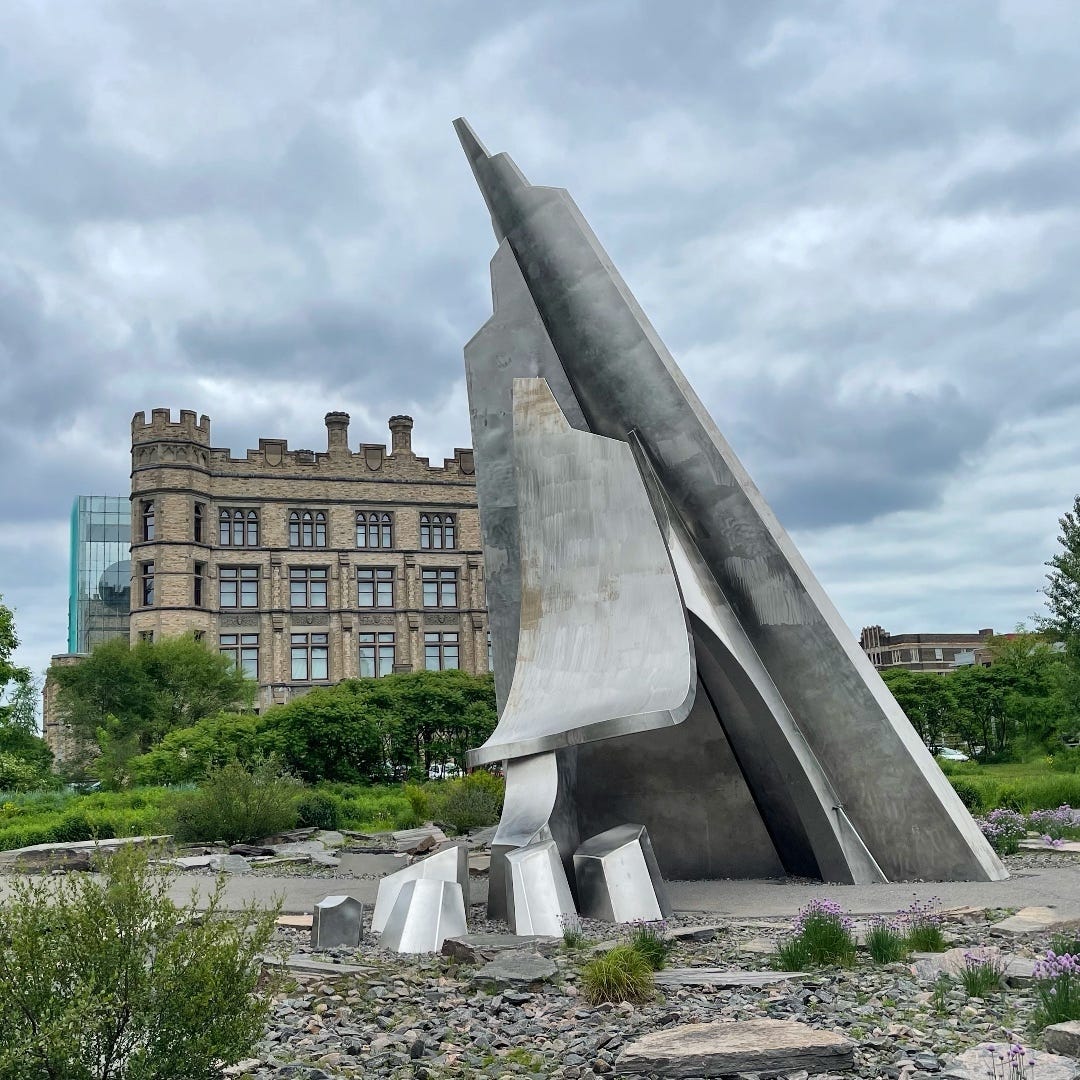How to Change Your Perspective on Climate Change
A journey through the ripple effects of a global crisis
Between October 6 and October 31, 1957, the Western world faced such a massive crisis that the New York Times wrote about it in more than 11 articles per day. The cause of all fear was tiny; Sputnik was a polished metal sphere the size of a beach ball with four external radio antennas to broadcast radio pulses.
I remember my father describing his memories of hearing the beeps that amateur radio operators worldwide could easily detect. He told me this decades later when considerably larger structures orbited Earth, manned by astronauts who lived there for months, and Sputnik was considered ancient technology.
But in ’57, the cosmic beeping still captivated the world like a doctor listening to a heartbeat. The West feared losing its technological advances to the Soviet Union, and the ‘Sputnik Crisis’ became a significant event in the Cold War. It catalyzed the creation of NASA and kicked off the Space Race between the two superpowers.
The Soviets’ development of the world’s first artificial satellite didn’t come as a complete surprise for the Americans, but their estimates were off by a factor of ten. Instead of expecting a massive satellite over five meters wide, they faced one just half a meter in diameter. This undersized object created a global panic, and its beeps heralded the dawn of a new era of communication, weather prediction, scientific research, and political rivalry.
Fast forward to our time, and everything has turned around. The story of a small satellite launching a global crisis in 1957 is today replaced by the story of a worldwide climate crisis leading to the launch of a tiny satellite.

In late May, Rocket Lab launched the first of two NASA climate satellites designed to study heat emissions at the Earth’s poles in New Zealand. The PREFIRE (Polar Radiant Energy in the Far-InfraRed Experiment) mission involves two tiny CubeSats, each the size of a shoe box, much smaller than that Soviet skippy ball of ’57, which the Americans had imagined as one of more than five meters in diameter.
These CubeSats will measure the amount of heat the planet emits into space from the Arctic and Antarctica. This information is essential for climate change researchers to understand better the balance of energy coming into and out of Earth. It helps them predict changes in Earth’s ice, seas, and weather patterns in a warming world. The second PREFIRE CubeSat will likely lift off soon. Following a 30-day checkout period, both satellites will operate for about ten months.
Today, I was reminded of the vast changes in the Arctic when I passed an iceberg sculpture in the heart of Ottawa. Bill Lishman, a sculptor who has explored both the Arctic and Antarctic, created it in 2015. In that icy part of our planet, he found inspiration in the monumental forms of icebergs — nature’s frozen sculptures.
Lishman, also known as “Father Goose,” is famous for his viral videos on social media, which show him as the first human to lead birds in the air with an aircraft. You may have seen his work with migratory birds in the 1996 Oscar-nominated film “Fly Away Home.”
I still need to warm up to the icy monument’s beauty from an artistic point of view, but I like the environmental awareness it creates. It certainly attracts attention in the middle of Canada’s capital. That was likely a consideration when Lishman created this stainless steel monument. He invites viewers to contemplate the delicate balance between colossal icebergs and the fragile Arctic tundra.
Therefore, some recreated Arctic tundra encircles the sculpture. I tried to capture it in a photo, but two girls, at the age when pink is the color of choice for their dolls and themselves, broke the illusion. They ignored the fake iceberg in a barren, cold landscape of the stark, treeless tundra. Instead, they enjoyed their play in the sun on one of the first days with summer-like conditions in Ottawa.
A nearby information board explained that the sculpture dramatizes the natural disparities that define Canada’s Arctic. In that cold north, colossal icebergs contrast with minuscule flora. So, this artistic impression of an iceberg shows us the delicate equilibrium of this remote ecosystem.
A Nevada Bumblebee
I found an example of that disparity directly beneath the stainless steel iceberg. My attention was drawn away from the 13-meter-high structure by a beautiful Nevada bumblebee actively searching for nectar in the chive flowers of the recreated Arctic landscape. She must have felt at home since this black and gold bumblebee inhabits open areas such as prairies and meadows, where it prefers to nest underground.
I followed the busy bumblebee on her route from flower to flower and tried to capture her. She moved so fast and efficiently that only one of the dozen pictures I took was in focus and good enough to share with you.
The bumblebee was indeed a she. I had to look that up online; her black head makes her a she-bee. The males, or drones, have yellow hairs on their faces. Besides, male bumblebees leave collecting pollen to the women, just like they don’t help build the hive or care for the young; their primary role in life is to mate with new queens from other colonies. Only the women have stingers; with that advantage, I wonder if it isn’t time for a social revolution in the bumblebee world.
But bumblebees have far bigger worries than modernizing their social structure. Climate change threatens many of their colonies. Unlike most insects that thrive in the tropics, bumblebees prefer much cooler places like the Alps or northern Europe. A quick look at one of these beauties and you will understand they are well equipped for cooler conditions due to their size, round shape, and furry appearance. One species even prefers to live in the Arctic, the Bombus polaris.
These characteristics make them vulnerable to climate change. A recent study published in Frontiers in Bee Science found that the ideal temperature range for incubating bumblebee nests is between 28 and 32 degrees Celsius. Most broods will not be able to survive above 36 degrees Celsius; the nests become too warm to raise healthy larvae.
It likely explains the massive loss of bumblebees in North America and Europe, where average temperatures rise and heatwaves become more frequent and extreme. Habitat loss and the use of pesticides have already challenged the bumblebees’ survival, and the impact of global warming will likely make their plight far worse.
Last summer, I saved several bumblebees I found on the pavement by transferring them to a safe corner of my garden and putting a teaspoon of sugar water next to them. Each bumblebee enjoyed the treat, and it took them only minutes to take off again.
I realize my actions added nothing to a structural solution for their challenges, which requires developing and implementing firm climate action policies at the government level. However, if you would ask each of these individual bumblebees, they will likely tell you that this energy shot after removal from a busy sidewalk saved their lives.
Changing your perspective
It often only takes a slight change of perspective to contribute to a better world. And if it’s not a better world for all, it’s at least a better world for this handful of furry friends.
Life in the polar regions remains interesting if we move our search to even smaller organisms. A few months ago, a fascinating study led by biologists from Ghent University, Belgium, concluded that communities of microorganisms found at the bottom of polar lakes had evolved independently from other regions; they have been influenced by their regions’ particular geological, biological, and climate history.
The researchers used DNA to compare the composition of communities in hundreds of Arctic, sub-Antarctic, and Antarctic lakes to resolve whether they have the same evolutionary history. They found striking differences in the microbial communities’ composition between the polar regions, with lakes at the North and South Poles dominated by different groups. Their work is the first large-scale DNA study of these unique microbiomes. It was published in the journal Science Advances.
Until this study, scientists assumed that microorganisms, because of their astronomical numbers and small cell size, have moved unhindered across the Earth and colonized all suitable habitats. Scientists will now have to revise this hypothesis.
PREFIRE satellites
Meanwhile, high above these microorganisms, NASA’s PREFIRE CubeSat has deployed. After some testing, it will start measuring heat loss from the Arctic and Antarctic. When the second shoe-box-size twin is soon launched and tested, both PREFIRE satellites will be in near-polar orbits and provide daily observations of Arctic and Antarctic surfaces and clouds.
Their data on a range of climate variables, including atmospheric temperature, surface properties, water vapor, and clouds, will assist researchers in better understanding Earth’s energy budget — that is, when, where, and how much of Earth’s heat is lost to space from the Arctic and Antarctica. The collected information will also contribute to updating climate and ice models, leading to better predictions of how sea level, weather, and snow and ice cover will likely change in a warming world.
Scientists are eager to receive the new data since the CubeSats will gather information over the poles using sensors ten times more sensitive to infrared wavelengths than any similar instrument. Better data will contribute to a better understanding why the Arctic has warmed more than two-and-a-half times faster than the rest of the planet since the 1970s.
The Brunt Ice Shelf
This week, NASA’s Earth Observatory published an exciting example of the dynamics on the other pole, the Antarctic, where a large wedge of ice broke from Antarctica’s Brunt Ice Shelf. Look at these two thermal images, which use false colors to facilitate interpretation. Landsat 9 captured these images shortly after the break.

The first image shows the situation on May 20. The second one shows the same spot two days later.

Warmer temperatures, like open water or thin ice, are shown as yellow or orange. You can see that the ice shelf is already on the move. It is about the size of Portland, Oregon.
You may have noted that images of iceberg calving, especially those filmed at Greenland, are often prevalent in articles and videos about climate change. However, the storyline is a bit more complex. The calving of icebergs is a normal process; glacial ice flows from the inland ice sheet and spreads out over the sea. It’s like a river flowing in slow motion, and nobody is worried when the water reaches the ocean.
But that is not the whole story; the situation at the poles is dramatically changing. One aspect is the low sea ice conditions. This year, Antarctic sea ice reached its lowest annual extent on February 20, totaling 1.99 million square kilometers (768,000 square miles). Compared to the 1981 to 2010 end-of-summer average, 30 percent of the sea ice is missing. That difference is comparable to an area about the size of Texas.
The lack of sea ice exposes ice shelves to destabilizing wind and wave action. This process raises the question of what will happen to the remainder of the Brunt Ice Shelf after it has lost several icebergs.
Although the area of Antarctic sea ice fluctuated dramatically from year to year, historical averages over decades have been relatively stable. However, scientists are increasingly concerned that this stability is no longer there now that the sea ice cover around Antarctica has plummeted since 2016. After three record lows in seven years, we may witness a dramatic regime shift.
How changing your perspective helps in times of climate change
This planet gives us so much to admire and worry about. Changing perspective helps me when I feel overwhelmed by the folly of humanity’s creation of inhuman conditions on Earth, our only home. After reading news about heatwaves and floods, I walk into nature and admire trees, birds, flowers, or insects.
When writing, I frequently shift perspectives as well. In this story, the turn from the large shiny sculpture to the beauty of that colorful bumblebee was an actual event; the insect was just steps away from the iceberg monument. Other perspective shifts in this story happen while reading and writing; storylines form in my mind and flow on my screen like a natural sequence. This process brings me to one last different outlook; for that one, we have to zoom out from microorganisms, bumblebees, shoe-box-sized satellites, or icebergs to a hard-to-imagine frame of time and space.
A distant galaxy
Yesterday, NASA announced the discovery of the most distant galaxy ever found. It is surprisingly luminous, implying that the galaxy is hundreds of millions of times the sun’s mass. It puzzles scientists that nature created such a bright, massive, and large galaxy in less than 300 million years at the dawn of the universe.
I’m not an astronomer, which makes me struggle to shift my perspective from a bumblebee I photographed this week to scientists studying light as old as only some 300 million years after the Big Bang. That early light then took 13.5 billion years to reach us. Astronomers live the dream of any historian: travel back in time and watch past events in real time.
When reading about those timeframes and unimaginable distances, my perspective returns to Ottawa, the iceberg, and the nearby cafe on Bank Street. There, I asked the kind woman who always wears her red apron like a uniform for a cappuccino and scribbled the first notes and thoughts that form the basis for this story.
Before going home, I peeked again at the iceberg sculpture and hoped it would trigger some thoughts of people passing by about climate change in the Arctic, a region that heats up several times faster than here in Ottawa. I saw a tourist with a colorful backpack photographing his partner in front of the sculpture. A bit further, a school class of happy, babbling kids walked to the nearby museum. Unlike my generation, some of these kids already worry about their future in a rapidly warming world. Some may become the future leaders and scientists we need to escape this crisis, with the motivation and perspective to see a bright future for humanity.
Did you know that clicking on the ❤️ at the bottom or the top of this post will help others discover my publication? You can also share it with others. The best way to support my work and not miss anything is by subscribing to this newsletter.
There is often something extra to enjoy on Patreon:
Or perhaps you liked the article and want to support my writing by buying me a coffee?
I always love to read subscribers’ comments:
One year ago, I wrote:
Oker
From my high table, I watch the scene unfold in a restaurant on Denneweg, that charming street in The Hague known for its cafes and antique shops. Inside, two men find solace at the bar, their conversations interwoven with tales of distant lands and untamed adventures. Nearby, a couple leans in close. I can't hear their whispered stories, shared secrets…
Notes:
https://www.cbc.ca/news/canada/ottawa/bill-lishman-iceberg-sculpture-1.3303631
https://astrobiology.com/2024/02/dna-reveals-that-unique-microorganisms-evolved-at-earths-poles.html
https://blogs.nasa.gov/smallsatellites/
https://earthobservatory.nasa.gov/images/152848/antarctic-ice-shelf-spawns-iceberg-a-83
https://www.frontiersin.org/articles/10.3389/frbee.2024.1351616/full






What an exciting journey you take us on! First, NASA's PREFIRE CubeSats and Sputnik to Father Goose and his curious art (loved Fly Away Home!) then to bumblebees and your rescue (I do that too) then DNA and the polar regions and the Brunt Ice Shelf to a newly discovered luminous galaxy. Success!! Perspective shifted and as always, well done!! Thank you!!
An interesting article with so much to consider and ponder.
Reading your stories always helps me learn and makes me think.
Thank you.